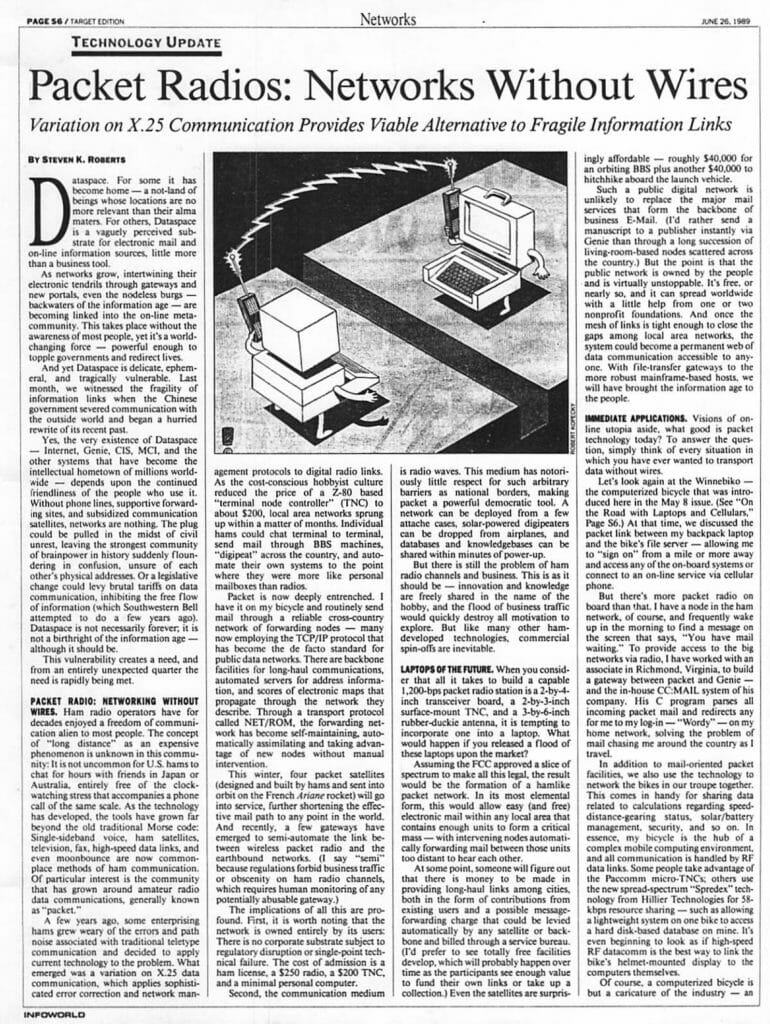Title: The Evolution of Communication: Exploring the Potential of Packet Radio
Introduction:
In today’s interconnected world, the reliance on information networks is undeniable. However, the vulnerability of these networks has become increasingly apparent, with recent events highlighting the fragility of our information links. It is crucial to explore alternative communication methods that are resilient and can provide a viable solution. One such solution lies in the variation of X.25 data communication known as packet radio. This technology, developed by ham radio operators, offers a promising alternative that could revolutionize communication in the digital age.
The Power of Packet Radio:
Packet radio has a rich history, with ham radio operators at its forefront. These enthusiasts have long enjoyed the freedom of communication without the limitations imposed by traditional methods. Packet radio takes this concept further by applying advanced error correction and network management protocols to digital radio links. With the advent of affordable hardware, such as the Z-80 based “terminal node controller” (TNC), local area networks quickly emerged, enabling hams to engage in terminal-to-terminal chats, send mail through BBS machines, and automate their systems.
The Resilience of Packet Radio:
Packet radio has evolved significantly and is now deeply entrenched in our digital landscape. Its network is entirely owned by its users, eliminating the vulnerabilities associated with corporate-controlled systems. Moreover, the communication medium of radio waves knows no national boundaries, making packet radio a powerful democratic tool for global connectivity. The flexibility of packet radio allows for the deployment of networks in remote areas, using solar-powered digipeaters and facilitating the sharing of databases and knowledgebases within minutes of power-up.
Commercial Applications and Future Possibilities:
While packet radio was initially developed as a hobbyist pursuit, its potential for commercial applications is becoming increasingly evident. Incorporating packet radio technology into laptops, for example, could create a ham-like packet network, enabling easy and free electronic mail within local areas. As the network grows and the gaps between local area networks close, a permanent web of data communication accessible to anyone could emerge. The affordability of satellite deployment further enhances the possibilities for long-haul links among cities.
Immediate Applications and Beyond:
Packet radio technology has immediate applications that can enhance various industries. For instance, it has been successfully integrated into computerized bicycles, allowing bikers to access on-board systems, connect to online services via cellular phones, and even share data within a troupe of bikes. Beyond these applications, packet radio has the potential to revolutionize other areas, such as linking processors in buildings, connecting terminals on forklift trucks, and enabling wireless Ethernet capability in handheld computer systems.
Conclusion:
In an era where the vulnerability of traditional information networks is evident, exploring alternative communication methods becomes paramount. Packet radio, born out of the ingenuity and passion of ham radio operators, offers a resilient and powerful solution. Its ability to provide robust connectivity, irrespective of geographical barriers, and its potential for commercial applications make it a technology worth considering as we strive to build a more resilient and inclusive digital world.


